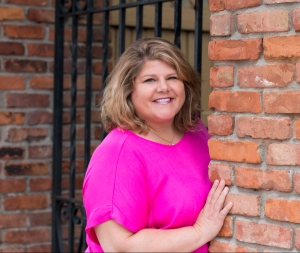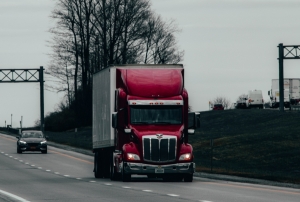
What is the key to recruiting a fleet of qualified, dedicated drivers?
It’s not just about finding the right skill set or filling vacancies quickly. The real secret lies in recognizing and valuing drivers as individuals, not just as leads.
In an industry where retention and job satisfaction are critical, the importance of treating drivers with respect and understanding cannot be overstated. Keep reading to find out why prioritizing personal connections in the recruitment process is essential for attracting and retaining a strong and committed team of quality drivers, and what strategies can help demonstrate your dedication to every candidate.
The Impact of Treating Drivers as People
Most truckers are well experienced in the recruiting process, and they can sense insincere or apathetic marketing tactics from a mile off. Treating drivers like leads, instead of real people, can discourage applicants from continuing through the process and can affect a carrier’s reputation and industry standing.
Find the best matches for your jobs.
Treating drivers like people means considering their unique skills, career goals, and job preferences. If you look at candidates simply as leads without any distinct qualities, you run the risk of believing that you can fill any job with any driver.
The best job matches are made when a driver’s unique experiences and preferences align with what is required of a position. Some drivers may prefer less home time, while others need to be with their families frequently throughout the week. Newer drivers may prefer the most modern model trucks, while seasoned veterans would be more comfortable with classic and reliable models.
Finding the right driver for each position requires you to get to know the priorities, goals, and preferences of each individual. Your recruiting becomes more precise and accurate when you treat drivers like people. From a driver’s perspective, this approach is beneficial because it meets their needs, making them more likely to be productive and perform at their best.
Increase retention.
Treating drivers like people will also help you recruit with more lasting value. When drivers feel appreciated, supported, and listened to, they are more likely to remain in a position long-term.
With the ongoing driver shortage and industry-wide high turnover rates, fostering loyalty and job satisfaction is crucial. When drivers feel valued, they develop a stronger attachment to their company and are less likely to seek opportunities elsewhere.
Carriers can demonstrate this appreciation through concrete actions such as conducting driver engagement surveys to understand their needs and concerns and offering appreciation programs to recognize certain safety and career milestones.
By consistently showing that they care about their drivers’ well-being and professional growth, carriers can build a more dedicated and stable workforce, enhancing overall operations and success.
Make recruiting more efficient.
Recruiters often have limited time and resources to fill numerous open positions. While it may be tempting to quickly contact as many candidates as possible to expedite the hiring process, this approach often results in high turnover within a few months.
Prioritizing quantity over quality may yield short-term gains, but it won’t attract the best drivers for the job. Treating drivers as individuals rather than leads allows for a more efficient process, as you can concentrate on engaging with top matches, ultimately leading to more enduring and successful hires.
Focus your energies on qualified, interested drivers and ensure they have a smooth process from recruiting, to onboarding, to their first day behind the wheel. Drivers will appreciate this, as their questions and concerns can be answered quickly and directly, making it easier to assess if the position is the right fit.
Strategies to Show Drivers Your Commitment
The best way to demonstrate to drivers that you value them as people, not leads, is to create driver-centric strategies that focus on their well-being and professional growth.
From the initial marketing to attract potential candidates to orientation and onboarding, these methods will help foster a positive work environment, boost morale, and enhance driver retention.
- Target Prospects with Compelling Marketing Materials: Highlight benefits that matter to drivers, such as work-life balance, health benefits, and retirement options. Answer the question, “What’s in it for me?” in your marketing materials to show you aren’t just looking to fill an open position.
- Offer a Referral Program: Encourage current drivers to refer others, demonstrating your trust in your employees and commitment to building a positive reputation. Referral programs can attract quality candidates who will have an easier time adjusting to company culture and practices.
- Establish a Digital Presence and Brand Identity: Use your website and social media to display your company culture, values, and real driver experiences through testimonials. Transparency builds trust with potential recruits, and a recognizable brand identity can attract drivers and differentiate your company from competitors.
- Optimize Your Applications: Simplify the application process. Lengthy forms can discourage applicants. Make sure your online application is user-friendly and mobile-responsive, such as including auto-fill features and digital signature capabilities.
For more advice on recruiting and retaining qualified drivers in today’s competitive market, be sure to check out the rest of our Employer blog posts and connect with us on social media.









 Now more than ever, the ability for carriers to retain truck drivers is key. As the labor market
Now more than ever, the ability for carriers to retain truck drivers is key. As the labor market The last thing a driver wants is a carrier that over-promises and under-delivers. Before posting a job, carriers should take the time to l
The last thing a driver wants is a carrier that over-promises and under-delivers. Before posting a job, carriers should take the time to l Sometimes it takes a carrier posting a job advertisement on Facebook for them to find out that their current drivers are unsatisfied. Maybe their pay is too low, their benefits aren’t desirable, or the carrier over-promises and under-delivers.
Sometimes it takes a carrier posting a job advertisement on Facebook for them to find out that their current drivers are unsatisfied. Maybe their pay is too low, their benefits aren’t desirable, or the carrier over-promises and under-delivers.  Instead of constantly investing in lofty sign-on bonuses to attract new drivers, carriers should implement referral bonus programs and
Instead of constantly investing in lofty sign-on bonuses to attract new drivers, carriers should implement referral bonus programs and 

 From shipping delays to empty shelves and rising prices in supermarkets, the effects of the truck driver shortage can be felt all across the country. Carriers and advocates have tried a number of ways to get more drivers into the industry. From raising pay to
From shipping delays to empty shelves and rising prices in supermarkets, the effects of the truck driver shortage can be felt all across the country. Carriers and advocates have tried a number of ways to get more drivers into the industry. From raising pay to 



 The final, but perhaps most important, retention strategy comes from
The final, but perhaps most important, retention strategy comes from 


